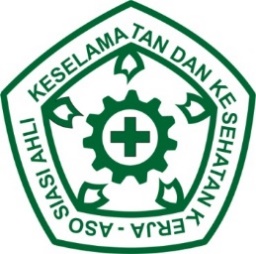Analisis faktor lingkungan terhadap kejadian kecacingan pada murid Sekolah Dasar di Kelurahan Seberang Tembilahan Kabupaten Indragiri Hilir
Abstract
This study aims to analyze the influence of physical environmental factors (clean water facilities, latrine conditions, SPAL conditions, type of house floor, household waste management), economic factors (family income) and social environmental factors (nail hygiene, use of footwear, washing habits hands with soap, bowel habits) against helminthiasis in elementary school students in Seberang Tembilahan Village, Indragiri Hilir Regency. The research location was conducted in Seberang Tembilahan Sub-District, Indragiri Hilir Regency in January to February 2020. The study used a survey method. The analytical method used is univariate analysis, bivariate analysis with Chi Square (Fisher) and multivariate analysis with logistic regression. The results of the study of 72 elementary school students in 4 elementary schools who were examined by laboratory feces, found positive results of worm infestation of 23.61% or 17 students. The final results of the model test showed that although the clean water facilities and toilet conditions were not significant, the two variables influenced each other, it was possible that there was an interaction between the two variables in influencing the incidence of helminthiasis in elementary school students. The variable that most affected the incidence of helminthiasis in elementary school students was the latrine condition with adjusted OR of 4.01 so that respondents whose conditions did not meet the requirements were 4.01 times more likely to experience helminthiasis compared to conditions that were eligible after being controlled by other variables. Simultaneously the two variables (clean water facilities and latrine conditions) can explain the variation of helminthiasis in elementary students by 9.9%.
Keywords
Full Text:
PDFReferences
Chandra, B. 2007. Pengantar Kesehatan Lingkungan. Penerbit Buku Kedokteran EGC. Jakarta.
Fitri, Arif, Iqbal M. 2012. Faktor Risiko Terjadinya Kecacingan pada Anak Sekolah Dasar di Kelurahan Pannampu Kec. Tallo Tapanuli Selatan. Airlangga University Library. Surabaya.
Isa, R. 2013. Hubungan antara Higiene Perorangan dan Sanitasi Lingkungan dengan Kejadian Infeksi Cacing pada Siswa SD Negeri Jagabaya 1 Warunggunung Kabupaten Lebak Provinsi Banten Tahun 2013. Tesis. Universitas Indonesia.
Kusnoputranto, H. 2011. Dasar-Dasar Kesehatan Lingkungan. FKM UI. Jakarta.
Notoatmodjo, 2007. Promosi Kesehatan dan Ilmu Perilaku. Rineka Cipta. Jakarta.
Notoatmodjo, 2010. Metodologi Penelitian Kesehatan. Rineka Cipta. Jakarta.
Kementrian Kesehatan Republik Indonesia Nomor 424 Tahun 2006 tentang Pedoman Pengendalian Cacingan.
Kementrian Kesehatan Republik Indonesia Nomor 03 Tahun 2014 tentang Pedoman Kesehatan Lingkungan.
DOI: https://doi.org/10.52364/sehati.v1i2.7
Refbacks
- There are currently no refbacks.
Copyright (c) 2021 Pelantar Press

Ciptaan disebarluaskan di bawah Lisensi Creative Commons Atribusi-NonKomersial 4.0 Internasional.




